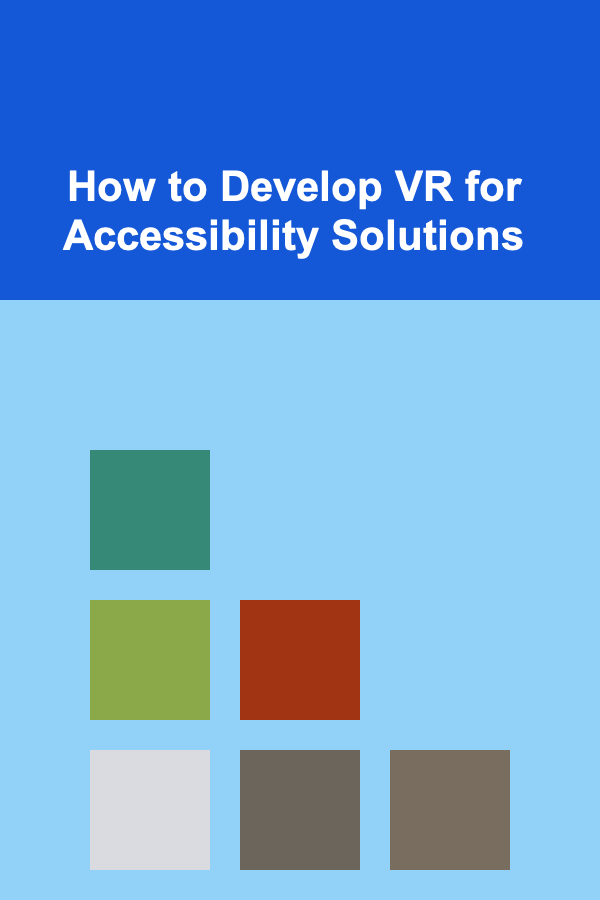
Optimizing AR for Head-Mounted Displays: A Comprehensive Guide
ebook include PDF & Audio bundle (Micro Guide)
$12.99$9.99
Limited Time Offer! Order within the next:

Augmented Reality (AR) on Head-Mounted Displays (HMDs) presents a unique and challenging development landscape. Unlike mobile AR, HMDs demand a higher level of immersion, precision, and performance to avoid discomfort, motion sickness, and a generally poor user experience. Optimizing AR applications for HMDs requires a multifaceted approach, considering factors ranging from rendering efficiency and tracking accuracy to interaction design and user comfort. This article provides a comprehensive guide to optimizing AR experiences for HMDs, covering key aspects from hardware considerations to software techniques.
I. Hardware Considerations and Limitations
Before diving into software optimizations, understanding the limitations and capabilities of the target HMD is crucial. Different HMDs have varying specifications that significantly impact AR performance.
A. Display Resolution and Refresh Rate
Resolution: Higher resolution displays are essential for visual fidelity in AR HMDs. Low resolution can lead to pixelation and a "screen door effect," where the gaps between pixels become noticeable, detracting from the immersive experience. Strive for the highest resolution possible within the budget constraints of the target HMD. Consider the trade-off between resolution and performance; increasing resolution significantly increases the rendering workload.
Refresh Rate: A high refresh rate (ideally 90Hz or higher) is critical for reducing motion sickness and improving responsiveness. Lower refresh rates can cause noticeable lag between head movements and the display updating, leading to disorientation and discomfort. Implement techniques like frame rate smoothing or dynamic resolution scaling (lowering resolution dynamically when the frame rate drops) to maintain a consistent refresh rate.
B. Field of View (FOV)
The field of view determines how much of the virtual world is visible at any given time. A wider FOV enhances immersion and reduces the feeling of looking through binoculars. However, wider FOVs require more rendering power. Optimize rendering by using techniques like frustum culling (only rendering objects within the camera's view) and level of detail (LOD) scaling (using lower-resolution models for distant objects) to manage the increased rendering load.
C. Tracking Technology
Tracking accuracy and latency are paramount for a stable and believable AR experience. HMDs employ various tracking technologies:
- Inside-Out Tracking: HMDs use onboard cameras to track their position relative to the environment. Optimizing this requires understanding the HMD's tracking algorithms and ensuring adequate lighting and visual features in the environment for reliable tracking.
- Outside-In Tracking: External sensors track the HMD's position. This typically offers higher accuracy but requires setting up and calibrating the external tracking system.
- Sensor Fusion: Combines data from multiple sensors (IMUs, cameras, GPS) to improve tracking accuracy and robustness. Ensure proper sensor calibration and synchronization for optimal performance.
Minimize tracking latency through efficient sensor processing and filtering algorithms. Predictive tracking algorithms can help anticipate head movements and further reduce perceived latency.
D. Processing Power and Memory
The processing power (CPU and GPU) and memory capacity of the HMD limit the complexity of AR applications. Optimize code for performance by minimizing memory allocations, using efficient algorithms, and leveraging GPU acceleration. Profile application performance to identify bottlenecks and areas for optimization.
E. Power Consumption and Heat Dissipation
AR applications can be computationally intensive, leading to high power consumption and heat generation. Optimize code and assets to reduce power consumption and prevent overheating, which can impact performance and user comfort. Consider using power-saving modes and reducing the frame rate when the application is idle.
II. Rendering Optimization Techniques
Efficient rendering is crucial for achieving smooth frame rates on HMDs. Here are some key optimization techniques:
A. Frustum Culling and Occlusion Culling
Frustum Culling: Only render objects that are within the camera's field of view. Most game engines and rendering APIs provide built-in frustum culling functionality.
Occlusion Culling: Prevent rendering objects that are hidden behind other objects. This can significantly reduce the rendering workload, especially in complex scenes. Implement occlusion culling using techniques like hierarchical z-buffering or occlusion queries.
B. Level of Detail (LOD) Scaling
Use lower-resolution models and textures for objects that are far away from the camera. This reduces the rendering load without significantly impacting visual quality. Implement LOD scaling automatically based on the distance to the camera.
C. Texture Optimization
Use compressed textures (e.g., ETC2, ASTC) to reduce memory usage and bandwidth. Choose the appropriate texture format based on the target HMD and image content. Mipmapping generates lower-resolution versions of textures, which are used for distant objects. This improves rendering performance and reduces aliasing.
D. Shader Optimization
Minimize Shader Complexity: Use simple shaders whenever possible. Complex shaders can significantly impact performance, especially on mobile HMDs. Optimize Shader Code: Identify and optimize inefficient shader code. Use shader profilers to identify performance bottlenecks. Use Shader LOD: Implement different shader versions with varying levels of complexity for different LOD levels.
E. Instancing and Batching
Instancing: Render multiple copies of the same mesh with different transformations using a single draw call. This can significantly improve performance when rendering many identical objects. Batching: Combine multiple meshes into a single draw call to reduce the overhead of draw calls. This is particularly effective for static objects.
F. Fixed Foveated Rendering (FFR)
FFR is a rendering technique that exploits the human eye's tendency to focus on a small area of the visual field (the fovea). It renders the foveal region at a higher resolution than the peripheral regions, reducing the overall rendering load without significantly impacting perceived visual quality. FFR requires support from the HMD hardware and rendering API.
G. Single Pass Stereo Rendering
Render both eyes simultaneously in a single pass, reducing the overall rendering workload. This is typically supported by modern rendering APIs.
III. Tracking and Registration Optimization
Accurate and stable tracking is essential for a believable AR experience. Here's how to optimize tracking and registration:
A. Sensor Calibration and Synchronization
Ensure that all sensors (IMUs, cameras) are properly calibrated and synchronized. This is crucial for accurate tracking and sensor fusion. Follow the HMD manufacturer's guidelines for sensor calibration.
B. Filtering and Smoothing
Apply filtering and smoothing techniques to reduce noise and jitter in the tracking data. This can improve the stability of the AR experience. Use Kalman filters or other smoothing algorithms to reduce noise while minimizing latency.
C. Predictive Tracking
Use predictive tracking algorithms to anticipate head movements and further reduce perceived latency. This can improve the responsiveness of the AR experience and reduce motion sickness.
D. Feature Tracking and Mapping
For inside-out tracking, optimize the environment for feature tracking. Ensure adequate lighting and visual features in the environment for reliable tracking. Use robust feature detection and matching algorithms to minimize tracking errors.
E. Registration Accuracy
Ensure that virtual objects are accurately registered with the real world. This requires accurate tracking and calibration of the HMD and the environment. Implement techniques like iterative closest point (ICP) to refine registration accuracy.
IV. Interaction Design for HMDs
Designing intuitive and comfortable interactions for HMDs is crucial for user satisfaction. Here are some key considerations:
A. Input Modalities
HMDs support various input modalities, including hand tracking, controllers, voice commands, and eye tracking. Choose the appropriate input modality based on the application and user preferences. Design interactions that are natural and intuitive for the chosen input modality.
B. Minimizing Motion Sickness
Motion sickness is a common problem with AR HMDs. Minimize motion sickness by:
- Maintaining a High Frame Rate: As mentioned earlier, a high and consistent frame rate is critical.
- Reducing Latency: Minimize latency between head movements and the display updating.
- Avoiding Artificial Locomotion: Avoid using artificial locomotion techniques (e.g., joystick-based movement) that can cause motion sickness. Use teleportation or other techniques that minimize virtual movement.
- Providing Visual Cues: Provide visual cues that help users orient themselves in the virtual environment (e.g., a virtual horizon or stationary objects).
- Gradual Acceleration and Deceleration: Avoid sudden acceleration and deceleration of virtual objects.
C. User Interface Design
Design user interfaces that are easy to use and read in a 3D environment. Consider the following:
- Font Size and Legibility: Use appropriately sized fonts that are easy to read at the typical viewing distance.
- UI Placement: Place UI elements in a comfortable viewing location, avoiding the edges of the field of view.
- Depth and Parallax: Use depth and parallax to create a sense of depth and separation between UI elements.
- Feedback and Confirmation: Provide clear feedback and confirmation for user actions.
D. Ergonomics and Comfort
Consider the ergonomics and comfort of the HMD when designing interactions. Design interactions that minimize physical strain and fatigue. Provide options for users to customize the HMD settings (e.g., interpupillary distance, brightness) to optimize comfort.
V. Software Development Practices
Adopting sound software development practices can significantly contribute to the performance and maintainability of AR applications for HMDs.
A. Profiling and Performance Analysis
Regularly profile your application to identify performance bottlenecks. Use profiling tools to measure CPU and GPU usage, memory allocations, and draw call counts. Analyze the profiling data to identify areas for optimization.
B. Memory Management
Optimize memory usage to prevent memory leaks and reduce garbage collection overhead. Use object pooling to reuse objects instead of creating and destroying them frequently. Minimize memory allocations in performance-critical sections of code.
C. Asynchronous Operations
Use asynchronous operations to perform long-running tasks without blocking the main thread. This can improve the responsiveness of the application. Use background threads or coroutines to load assets, process data, and perform network operations.
D. Code Optimization
Write efficient code that minimizes CPU and GPU usage. Use appropriate data structures and algorithms. Avoid unnecessary computations. Optimize code for performance by using compiler optimizations and hardware-specific instructions.
E. Cross-Platform Development
If targeting multiple HMD platforms, consider using a cross-platform development framework (e.g., Unity, Unreal Engine). This can simplify development and reduce code duplication. However, be aware of platform-specific differences and optimize code accordingly.
VI. Future Trends in AR Optimization for HMDs
The field of AR optimization for HMDs is constantly evolving. Here are some key trends to watch:
A. Edge Computing
Offloading computationally intensive tasks to edge servers can improve performance and reduce latency. Edge computing can be used for tasks like object recognition, scene understanding, and rendering.
B. AI-Powered Optimization
Artificial intelligence (AI) can be used to automatically optimize various aspects of AR applications, such as rendering, tracking, and interaction design. AI-powered optimization can adapt to different users and environments to provide a personalized and optimized experience.
C. Improved Tracking Technologies
New tracking technologies, such as markerless tracking and simultaneous localization and mapping (SLAM), are improving the accuracy and robustness of AR experiences. These technologies are enabling more realistic and immersive AR applications.
D. Advanced Display Technologies
New display technologies, such as micro-OLED and waveguide displays, are improving the visual quality and form factor of HMDs. These technologies are enabling more comfortable and immersive AR experiences.
VII. Conclusion
Optimizing AR for head-mounted displays is a complex and ongoing process. By understanding the hardware limitations, applying efficient rendering techniques, optimizing tracking and registration, designing intuitive interactions, and adopting sound software development practices, developers can create compelling and comfortable AR experiences for HMDs. As technology continues to evolve, new optimization techniques and tools will emerge, further enhancing the potential of AR on HMDs.

How to Generate Recurring Income Using AI and Deep Learning
Read More
How to Organize Household Chores for Seniors
Read More
How to Organize Your Holiday Gift Wrapping Station
Read More
Top Skills Employers Seek: What to Highlight on Your Resume
Read More
How To Drive Engagement with Interactive Marketing
Read More
How to Develop VR for Accessibility Solutions
Read MoreOther Products

How to Generate Recurring Income Using AI and Deep Learning
Read More
How to Organize Household Chores for Seniors
Read More
How to Organize Your Holiday Gift Wrapping Station
Read More
Top Skills Employers Seek: What to Highlight on Your Resume
Read More
How To Drive Engagement with Interactive Marketing
Read More